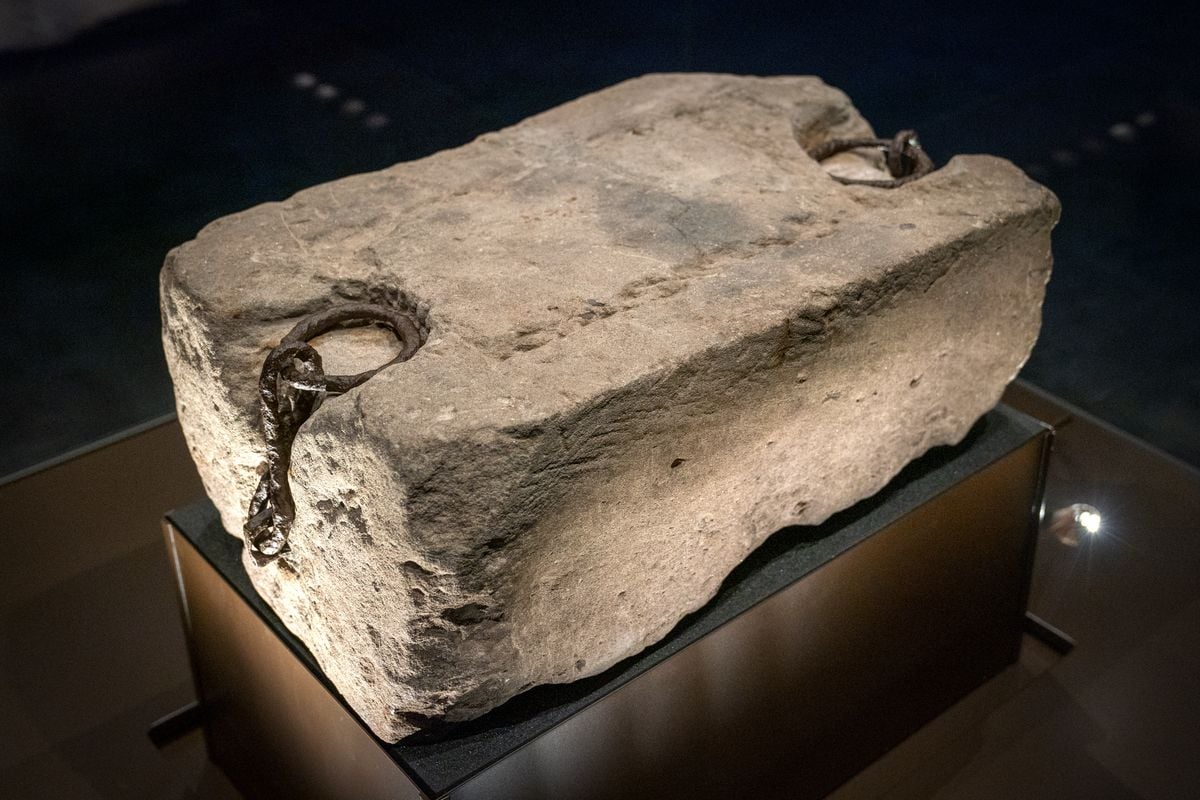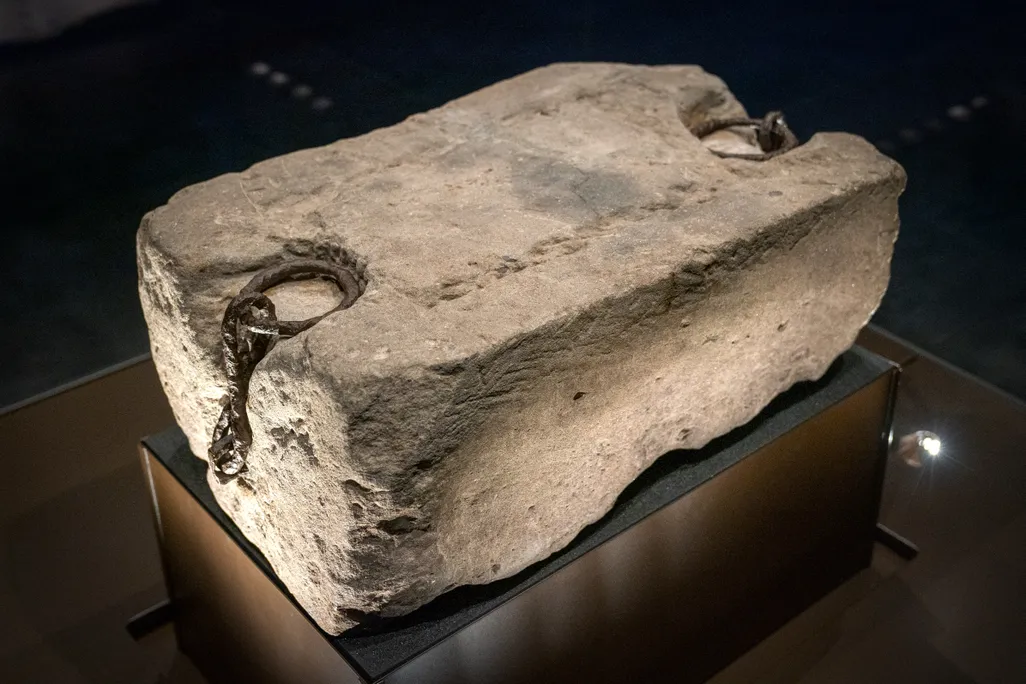
The symbolic artifact, which has been used for centuries during the coronations of Scottish and English monarchs, is on display at the Perth Museum

The Stone of Destiny is on display at the Perth Museum in Scotland.
Jane Barlow / PA Images via Getty Images
Police in Scotland have arrested a man who they say tried to break the case protecting the Stone of Scone, a symbolic rock used during the coronations of Scottish and British monarchs.
Arnaud Harixcalde Logan, a 35-year-old from Sydney, Australia, now faces a “malicious mischief” charge in connection with the incident. “Malicious mischief” is similar to vandalism and applies to the damage or destruction of another person’s property, reports the Australian Associated Press.
Fun facts: The Stone of Destiny’s recent travels
- In 2023, the stone briefly returned to England for the coronation of Charles III.
- Given the artifact’s fraught history, it was moved under tight security.
On the afternoon of July 12, police allege that Logan visited the Perth Museum and attempted to smash the glass case surrounding the Stone of Scone. He was wearing a kilt at the time.
“It’s honestly surreal, like something out of a historical drama or an action film,” Elle Alvarez, a tourist visiting from the Philippines, tells BBC News.
The venue was evacuated, but none of the artifacts on display suffered any damage, reports Artnet’s Brian Boucher. So far, police have not revealed any possible motive, nor many other details about the case.
The July 12 incident is just the latest chapter in the stone’s long—and often dramatic—story.
The 330-pound Stone of Scone—also known as the Stone of Destiny—is “an ancient symbol of Scottish nationhood,” writes Jill Lawless for the Associated Press. The origins of the hunk of red sandstone are murky. But its earliest recorded use took place in 1057, when Lulach, stepson of Macbeth, was crowned king at Scone Abbey.
In 1296, amid the Wars of Scottish Independence, the rock was stolen from Scotland by English monarch Edward I. It was later taken to Westminster Abbey, where it has been involved in the crowning of every English monarch since.
In December 1950, four Scottish college students snatched the stone from Westminster Abbey as a symbolic show of support for Scottish independence. A few months later, it reappeared in England.
In 1996, British officials formally returned the stone to Scotland. It was initially housed at Edinburgh Castle but later moved to the Perth Museum, where it remains on display today.
The stone may be hundreds of years old, but experts are still unraveling some of its secrets. In 2023, researchers created a 3D model of the stone and conducted an X-ray fluorescence analysis to learn more about its elemental composition.
Their research uncovered previously unseen markings that might be Roman numerals, as well as tool marks left during the stone’s original carving. They also found traces of copper alloy, which suggests some metal object—possibly a saint’s bell—had sat atop the stone for a long time.

/https://tf-cmsv2-smithsonianmag-media.s3.amazonaws.com/accounts/headshot/SarahKuta.png)






